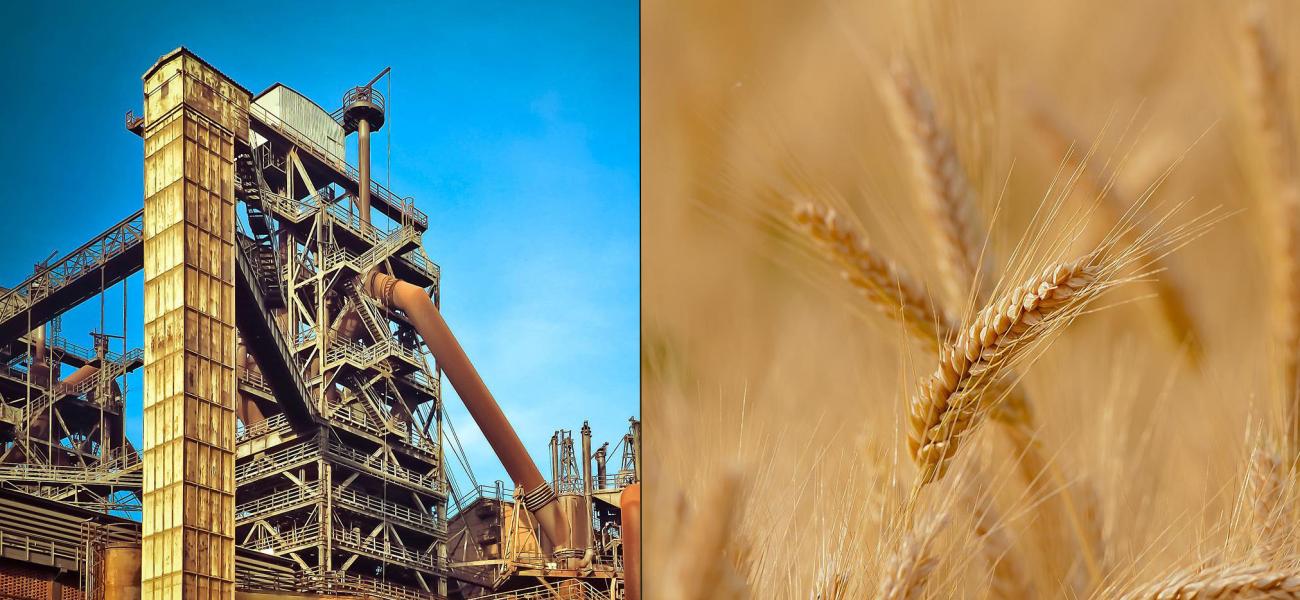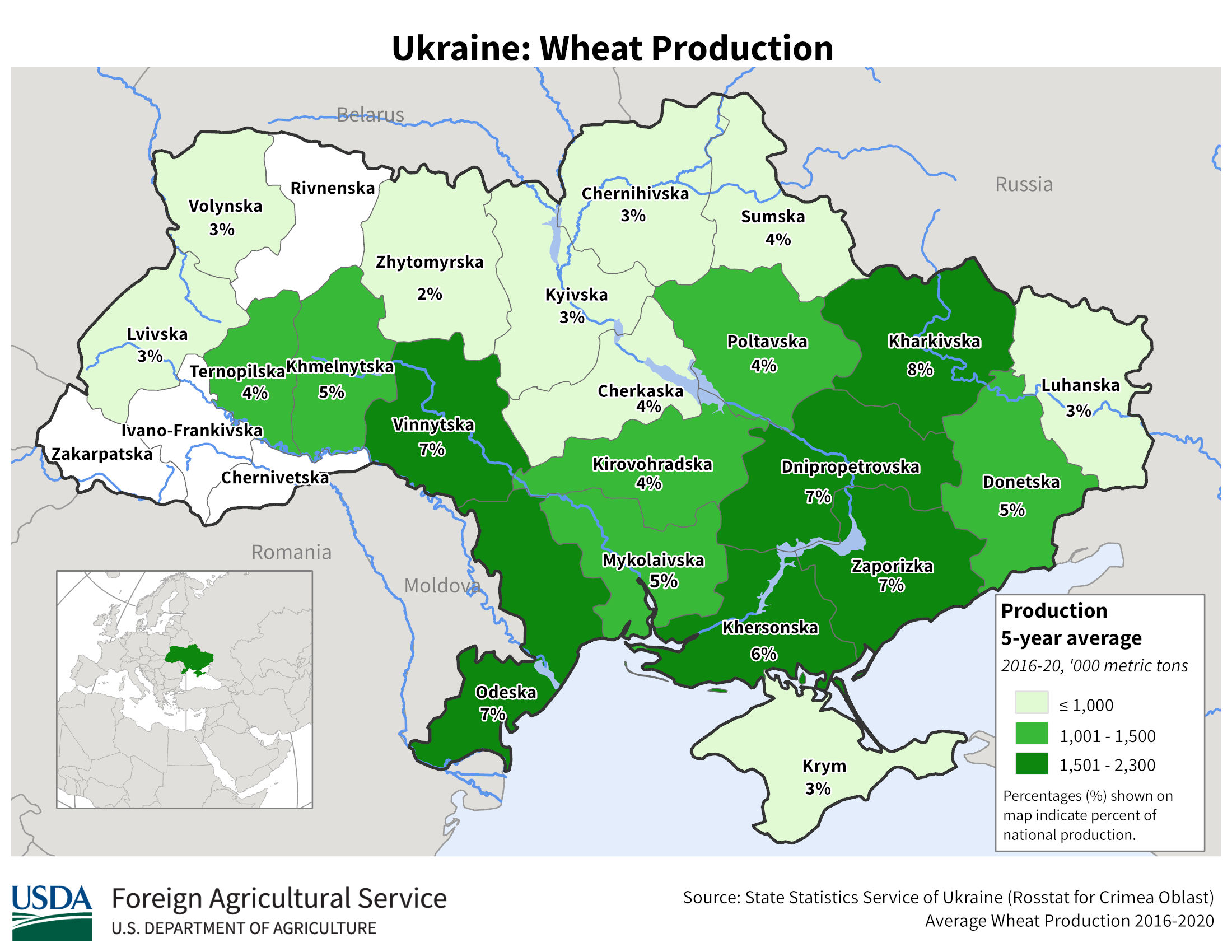
Donbas: What’s Ukraine Losing—Industrial Hub, Breadbasket or Both?
With Russian forces coming closer to establishing control over the entire Donbas, one can’t help but wonder what Kyiv might lose for good if Russia captures the remainder of this historical region, which consists of Ukraine’s Donetsk and Luhansk provinces, and holds onto it, per Putin’s plan. Searches for “Donbas”1 turn up descriptions of an “industrial heartland” and a “breadbasket” (though the latter term crops up far less often). Is the Donbas either? And what would Russia gain from controlling it?
The short answer to the first question, based on data from the State Statistics Service of Ukraine, is that prior to the conflict there the Donbas could indeed have been described as an industrial heartland, but not exactly a breadbasket. In 2013—the last full year before Russia’s de-facto separation of parts of these two regions from Ukraine—Donetsk and Luhansk:
- Jointly accounted for a quarter of Ukraine’s industrial production;
- Had the 2nd- and 9th-highest gross regional product, respectively, among Ukraine’s 27 constituent territories.
- When it comes to agriculture, however, only the Donetsk region made it into the top 10 of Ukrainian regions with the greatest agricultural production.
The longer answer to the first question is below.
Industrial production: In 2013 the Donetsk and Luhansk regions ranked No. 1 and 5, respectively, among Ukrainian constituent territories in terms of the value of their industrial production, jointly accounting for 25% of Ukraine’s total.
Agricultural production: In 2013 the Donetsk and Luhansk regions ranked No. 10 and 19, respectively, among Ukrainian regions2 in terms of the value of their agricultural production, accounting jointly for 7% of Ukraine’s total.

Source: USDA3
In addition, we have decided to crunch some numbers on two broader indicators typically measured when calculating the national power of countries: economic output and population. Here’s what we found:
Economy: In 2013 the Donetsk and Luhansk regions ranked No. 2 and 9 among Ukrainian constituent territories in terms of the size of their gross regional product, accounting jointly for 14% of Ukraine’s GDP in 2013.
Population: In 2013 Donetsk and Luhansk regions ranked No. 1 and 7 among Ukrainian constituent territories in terms of the size of their populations, jointly accounting for 14% of Ukraine’s GDP in that year.
As noted at the beginning of this post, the second question to ponder is this: If Donbas is indeed lost to Ukraine, what is it that Russia has gained? That question is much more difficult to answer, as both the population of Donbas and its economic output have shrunk considerably since de facto separation from Ukraine in 2014. For a sense of scale, however: If the population and economic output of Donbas were somehow transferred to Russia in their entirety in 2013, then Donbas’s share in Russia’s output and population would have been about 2%.5 Therefore, in relative terms, Ukraine’s loss would be greater than Russia’s gain.
Footnotes
- There is no “Donbas” administrative unit in Ukraine. There is the Luhansk Oblast (province or region) and the Donetsk Oblast. The Russian side, however, insists that there is a Donetsk People’s Republic, which should comprise all lands within the borders of the Donetsk Oblast, and a Luhansk People’s Republic, which should comprise all lands within the borders of the Luhansk Oblast. It is all these territories that Russia’s present leaders typically have in mind when they refer to Donbas. The toponym itself is derived from two words: Donetsky (Donetsk) and bassein (basin), a reference to a coal basin, most of which is located in the modern-day Donetsk region.
- Three constituent territories—the cities of Kyiv and Sevastopol, as well as the Republic of Crimea—were not included in the count by Ukraine’s statistical agency.
- More USDA data on Ukraine’s crop production can be found here.
- Here and elsewhere 1 hrvynia = 0.1226 USD, per the average exchange rate in 2013.
- This calculation doesn’t include Russia’s de facto control, as of June 26, 2022, of the land bridge from Donbas to Crimea and of Crimea itself.
Photos shared under a Pixabay license.
No comments:
Post a Comment